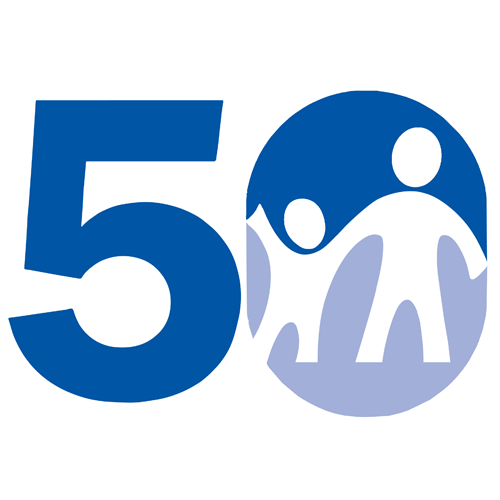Supports for child care, the early childhood workforce and early childhood homelessness were on the mind of our families, early childhood providers, advocates, politicians and communities in 2021.
A look at our most popular blog posts shows families, early childhood providers, advocates, politicians and our communities were eager to find child care and ways to pay for child care in 2021. It also shows they were looking for solutions for our youngest children and their early educators through the American Rescue Plan and were advocating for better pay and benefits for the child care workforce, all amid the pandemic.
Here are our top ten blog posts from 2021.
- Applying for 2021-2022 NC Pre-K
- Additional Help on the Way to Support Child Care for Working Parents
- American Rescue Plan: An Opportunity for Free or Low-Cost Health Insurance for the Child Care Workforce
- It’s Long Past Time Early Childhood Educators Earned a Worthy Wage
- WAGE$ Supplements are Vital for Early Childhood Educators, Pandemic or Not
- Child Care Workforce Compensation: A Key Component for Economic Recovery
- NEW: Register for Pre-K CLASS® Assessments
- CCSA’s American Rescue Plan Statement
- American Rescue Plan and the Child Care Workforce
- An Invisible Crisis: Early Childhood Homelessness – A Primer
See more information below on each of the top ten blogs of 2021.
1. Applying for 2021-2022 NC Pre-K
Our most popular blog of 2021, showing that even during a pandemic, families were still looking for quality child care. NC Pre-Kindergarten (NC Pre-K) is the state-funded, part-day preschool program designed to provide at-risk 4-year-old children with a quality early childhood education. Families need a safe and nurturing, high-quality environment to send their children to be able to return to the workforce.
2. Additional Help on the Way to Support Child Care for Working Parents
Many child care programs are currently open. However, child care enrollment was low, which affects the economic viability of operating a child care business. New laws, such as the Consolidated Appropriations and COVID Relief Act, provide support for child care funding, small business assistance, unemployment assistance, housing assistance and economic impact payments, allowing our country’s economy to get back up and running. Coming in second, we know our communities were looking for these crucial supports.
3. American Rescue Plan: An Opportunity for Free or Low-Cost Health Insurance for the Child Care Workforce
Under the American Rescue Plan passed by Congress and enacted into law on March 11, 2021, a number of important changes were made to help make health insurance more affordable for individuals and families purchasing health care coverage through the federal marketplace, HealthCare.Gov. As the third most popular blog post of 2021, more affordable and accessible health care coverage is essential, especially for the mostly underinsured and underappreciated child care workforce.
4. It’s Long Past Time Early Childhood Educators Earned a Worthy Wage
We know child care teachers are the workforce behind the workforce. Families rely on our early education system to keep working, and our state’s economy does, too. Yet, child care teachers, overwhelmingly women and primarily women of color, earn an average of just $12/hour—less than $25,000/year—even with a degree. One in five teachers don’t have health insurance during a pandemic, and many don’t have access to paid sick leave to care for themselves or their families. Coming in fourth, we know that the general public and politicians now know and care about this.
5. WAGE$ Supplements are Vital for Early Childhood Educators, Pandemic or Not
The COVID-19 pandemic has devastated an already struggling early care and education field. Child care programs have had to close, and those that have remained open have adapted to new challenges. Not only have programs struggled financially, but early childhood providers have, too.
While the Child Care WAGE$® Program has helped many educators in a time of need, if educators continue to receive low wages, there won’t be any left, pandemic or not. Professional compensation and benefits are needed to recruit and retain a high-quality early childhood workforce in 2021 and beyond.
6. Child Care Workforce Compensation: A Key Component for Economic Recovery
Child care is the workforce behind the workforce, yet the market is failing. This joint blog published by Marsha Basloe, president of Child Care Services Association (CCSA), and Amy Cubbage, president of the North Carolina Partnership for Children, offers the Child Care WAGE$® Program as a common-sense solution to a market failure for North Carolina’s legislation to consider. North Carolina’s economic recovery depends on it.
7. NEW: Register for Pre-K CLASS® Assessments
Even during a pandemic, early childhood professionals still looked to improve their classroom quality in infant through third-grade classrooms. CLASS® helps teachers foster a secure, supportive base for learning and exploration. Providers learn how to nurture children’s early learning while responding to their needs. Our youngest children need this now more than ever.
8. CCSA’s American Rescue Plan Statement
CCSA commended the American Rescue Plan, which marks a monumental investment in child care. However, much work remains to make permanent such landmark policies as the enhanced child tax credit, paid family and medical leave, and a comprehensive, high-quality child care system. We stand with our partners to make these and other essential programs permanent.
9. American Rescue Plan and the Child Care Workforce
Congress has spoken – with rules and funding. Now it’s up to each state to figure out the next steps as to how the new funding is best used. The American Rescue Plan assists families, employers, communities and states as the nation and our state embark on the journey to economic recovery.
Congress clearly understood the most considerable cost to operate any child care program is funding to pay staff. Congress understood that:
- The child care workforce supports all other workforces, but the average pay is low.
- Staffing challenges related to COVID-19 remain an ongoing cost and struggle for child care programs.
More needs to be done. Economic recovery will depend on the child care workforce because child care programs can’t operate without staff.
10. An Invisible Crisis: Early Childhood Homelessness – A Primer
Coming in as the tenth most popular blog of 2021, we know reducing early childhood homelessness is critical to our community. Approximately one in 18 (1.3 million) infants, toddlers and preschoolers experience homelessness each year.
Our young children are at risk, and children experiencing homelessness are at higher risk. We are still in the middle of a pandemic. Evictions are still happening across the country. That means more families with young children could be forced into the streets.
This primer showcases that together, early childhood policy and homelessness policy can help mitigate the negative impacts of homelessness on young children and support their development, health and wellbeing. We hope to see more collaboration on early childhood policy and homelessness policy in 2022.

As we inch our way into 2022
CCSA will continue to lead efforts to strengthen accessible and affordable quality early care and education by supporting families, communities and the workforce. Our vision is for all children to have equitable access to affordable, high-quality early care and education to lay the foundation for successful life outcomes.
Will you help us ensure every child has an excellent start to lifelong learning in a safe, nurturing, quality environment by supporting our youngest children, their families and their early educators?




